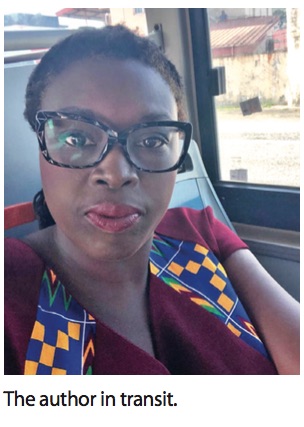
Trinidad and Tobago, my beloved homeland, is a place where every corner holds a story, and every journey an adventure. Recently, I embarked on a rather “unconventional” (although it shouldn’t be) trip – a ride on a Public Transport Service Corporation (PTSC) bus to a board meeting. Allow me to share my tale filled with surprises and insights that shed light on the complexities of our island's public transportation system. Let me take you through the highs and lows, the good, the bad, and the downright ugly moments that defined my excursion.
First, I must state that urban areas in particular cannot function well without a reliable public transportation system and the associated public transport infrastructure. A good public transportation system guarantees citizens' efficient mobility and lowers pollution and traffic congestion.
Feedback from the public is essential to the system's development and improvement. The views of members of the public are vital in identifying areas for improvement, offering creative ideas, and offering constructive criticism on their experiences. It is great for us transport planners when citizens directly participate in the improvement of services by sharing their opinions and providing insights. This usually results in a public transportation system that is more reliable, convenient, sustainable, and able to meet the wide range of community demands.
With that being said, I’ll now tell you about my bus journey. Let's start with “the good”. Picture this: a waiting time of just 30 seconds before I hopped aboard the bus. Was it sheer luck or a testament to the system's efficiency? I'll let you be the judge. Adding to the charm was the demeanour of the bus driver, whose friendliness made the journey feel like a casual chat among old friends. But this is Trinidad, where friendly chats with people you don’t know is normal, right?
The real marvel came as we navigated the Priority Bus Route (PBR). Despite the chaos of rush hour traffic happening elsewhere, we arrived at Port-of-Spain in a mere 30 minutes from St Augustine, a feat unimaginable had I opted for a private car. It embodied the potential of public transport to ease congestion and promote sustainable mobility, especially during peak season for events and festivities such as Carnival.
The spaciousness of the bus, a haven for tall individuals like myself, and the affordability of the journey, priced at a modest $4, further enhanced my appreciation for the PTSC service. However, amidst the commendations lay areas ripe for improvement, as encapsulated in "the bad" and "the ugly" facets of my journey.
The cleanliness of the bus left much to be desired, reminiscent of public transport experiences in major metropolitan cities such as New York and London. Furthermore, the antiquated payment system, reliant solely on physical paper bus tickets, poses a hurdle in today's digital age. Thankfully, a stroke of luck saved the day as I unearthed an ancient bus ticket from five years prior, prompting a reflection on the urgent need for modernisation and accessibility in our transport infrastructure.
Yet, it was "the ugly" aspects of my journey that left a bitter taste in my mouth. The absence of WiFi, a modern-day necessity, underscored the digital divide prevalent in many developing nations like ours. Plus, there are no detailed timetables available…anywhere! Moreover, accessibility issues at bus stops highlighted the systemic barriers faced by people with disabilities, a stark reminder of the work that remains to be done in fostering inclusivity.
In sharing my journey, I hope to spark a conversation about the triumphs and tribulations of public transport in Trinidad and Tobago. It's a call to action for stakeholders to heed the clarion call from members of the public for reform, and for governments around the region to collaborate with institutions like The University of the West Indies to envision a future where our transportation system is accessible and equitable for all.
My journey served as a microcosm of the challenges and opportunities inherent in navigating our island's public transport network. Every journey, no matter how mundane, holds the potential to inspire change and drive progress in our quest for a better tomorrow.